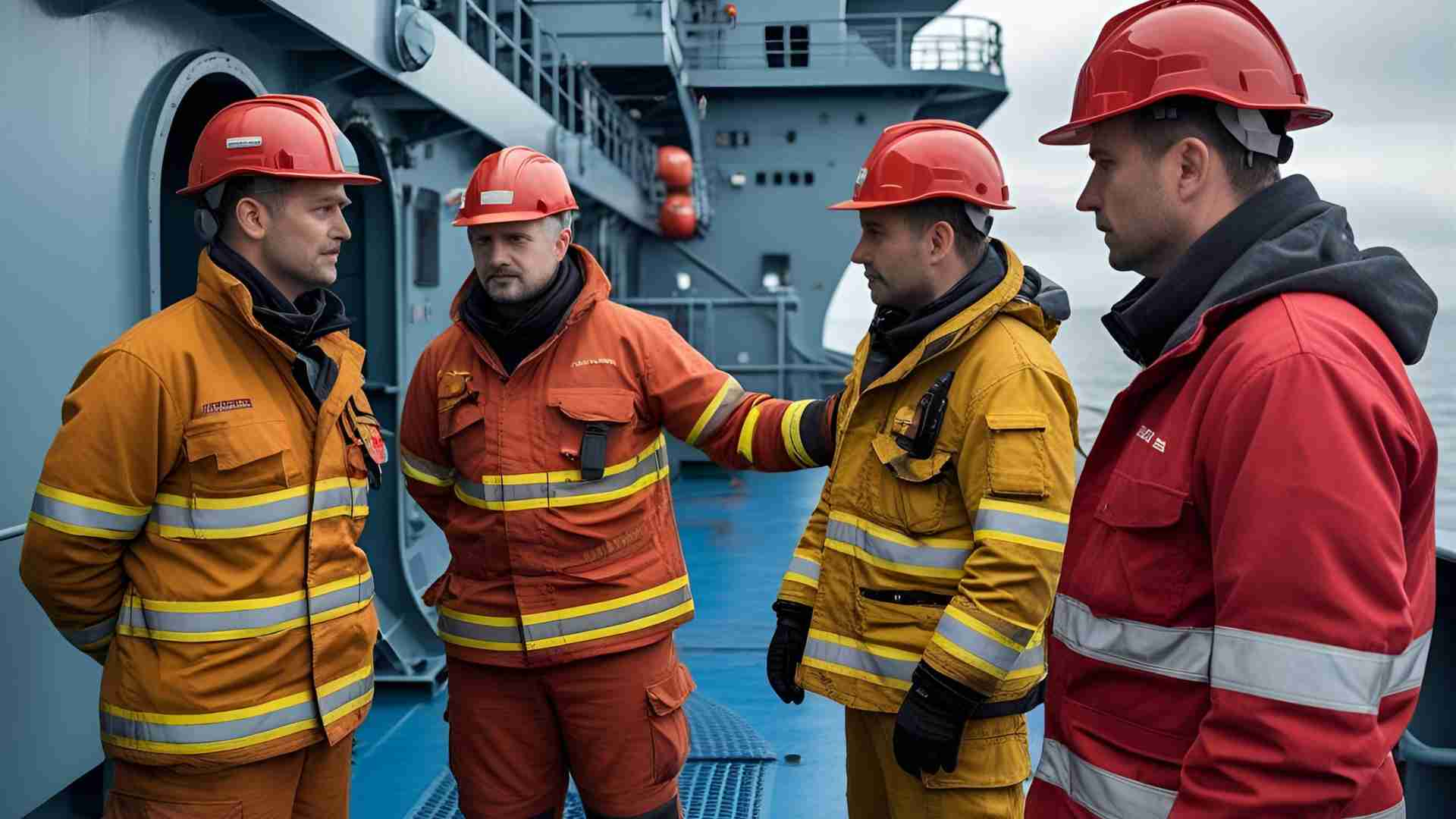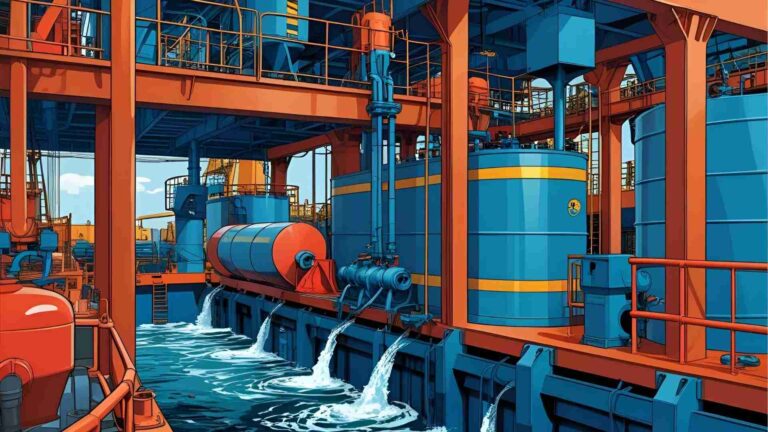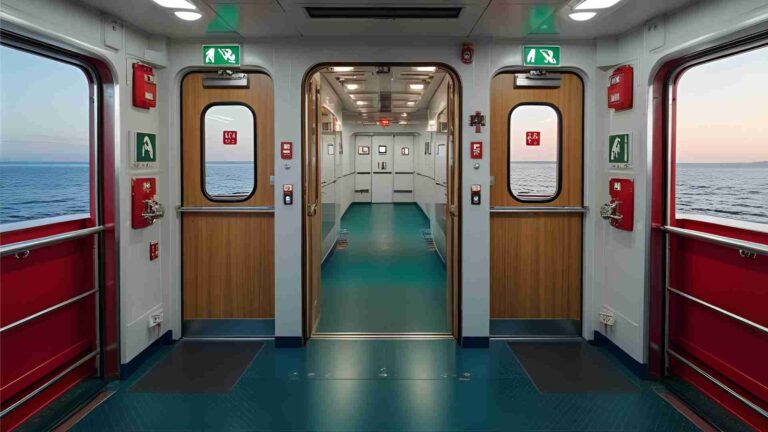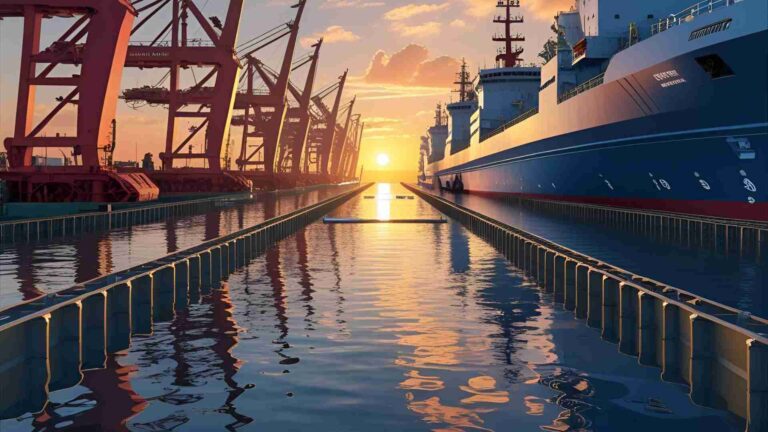What is Fire Safety System (FSS) Code on Ships?
Explore the FSS Code, a vital IMO framework ensuring fire safety on ships with detailed standards for detection, extinguishing, and escape systems.
Fire on ships poses one of the most severe threats to life, property, and the environment. With limited resources and confined spaces, fires at sea can escalate rapidly, making prevention and preparedness critical. The International Code for Fire Safety Systems (FSS Code), developed by the International Maritime Organization (IMO) under the International Convention for the Safety of Life at Sea (SOLAS), Chapter II-2, establishes a robust framework to mitigate fire risks on ships. This article provides an in-depth exploration of the FSS Code, its purpose, components, technical specifications, and its role in enhancing maritime safety. Aimed at ship operators, crew members, and maritime students, this guide offers a detailed understanding of how the FSS Code ensures ships are equipped to prevent and combat fires effectively.
What is the Fire Safety Systems (FSS) Code?
The FSS Code is a mandatory set of international standards that outline technical specifications for fire safety systems and equipment on ships. Enforced under SOLAS Chapter II-2, it applies to all SOLAS-compliant vessels, including cargo ships, passenger ships, and tankers. Adopted during the 73rd session of the IMO’s Maritime Safety Committee (MSC) and effective since July 2002, the code addresses fire prevention, detection, and suppression through detailed engineering and operational requirements.
The FSS Code serves as a cornerstone of maritime fire safety by:
- Providing standardized technical specifications for fire safety equipment.
- Ensuring user-friendly guidelines for manufacturers, engineers, and crew.
- Enhancing risk management to address fire and explosion hazards.
- Prioritizing the safety of human life, property, and the marine environment.
The code comprises 15 chapters, each focusing on specific fire safety components, from fire detection systems to means of escape. Its development was spurred by high-profile maritime fire incidents, such as the Scandinavian Star disaster, which claimed 159 lives and highlighted the need for stricter fire safety regulations.
Purpose and Scope of the FSS Code
The FSS Code’s primary objective is to reduce the risk of fire-related incidents on ships by establishing uniform standards for fire safety systems. Its scope includes:
- Mandatory Compliance: All SOLAS ships must adhere to the FSS Code, ensuring consistent fire safety measures across global maritime operations.
- Technical Specifications: The code details engineering requirements for fire detection, extinguishing, and escape systems, ensuring reliability and effectiveness.
- User-Friendly Design: Written to be accessible to manufacturers, system designers, and crew, the code facilitates straightforward implementation.
- Risk Management: By addressing fire and explosion hazards, the code integrates with a ship’s broader safety strategy.
- Emergency Preparedness: The code ensures ships are equipped to respond swiftly and effectively to fire emergencies, minimizing damage and loss of life.
The FSS Code is periodically updated to incorporate technological advancements and lessons from maritime incidents, ensuring it remains relevant to modern shipping needs.
Key Components of the FSS Code
The FSS Code covers a wide range of fire safety systems, each detailed in its 15 chapters. Below, we explore the key components, their technical specifications, and their role in maritime fire safety.
1. Fire Main Systems
Fire main systems are the backbone of a ship’s firefighting capability, delivering water to combat fires across the vessel. The FSS Code specifies their design, installation, and maintenance to ensure operational reliability.
- Design and Construction: Fire main systems include seawater intakes, fire pumps, and a network of pipes and hydrants. The system must deliver sufficient water pressure (at least 0.27 N/mm²) to multiple hydrants simultaneously, ensuring coverage of all ship areas.
- Fire Pumps: Ships must have at least two independently powered fire pumps, capable of operating independently to ensure redundancy. Emergency fire pumps, detailed in Chapter 12, must meet specific capacity and pressure requirements to function during power outages.
- Hydrants and Hoses: Hydrants are strategically placed to ensure every part of the ship can be reached by at least two water streams. Hoses must be durable, equipped with nozzles for solid and spray streams, and long enough to cover designated areas.
- Maintenance and Testing: Regular inspections are mandated to check for leaks, verify pump performance, and ensure hoses and nozzles are in good condition. Non-compliance, such as inadequate pressure, is considered a detainable deficiency.
2. Fixed Fire Extinguishing Systems
Fixed fire extinguishing systems are designed to suppress fires in specific high-risk areas, such as engine rooms, cargo holds, and galleys. The FSS Code outlines requirements for various systems, including:
- CO2 Systems (Chapter 5): Carbon dioxide systems flood protected spaces with CO2 to displace oxygen and extinguish fires. They are commonly used in engine rooms and cargo spaces. The code specifies CO2 cylinder quantities based on space volume, discharge controls, and safety interlocks to prevent accidental release.
- Foam Systems (Chapter 6 and 14): Foam systems create a blanket to smother flammable liquid fires, preventing re-ignition. They are used in engine rooms, cargo spaces, and deck areas. The FSS Code details foam agent types, concentration levels, and application rates.
- Water Mist Systems (Chapter 7): These systems use fine water sprays to cool and suppress fires, effective for electrical and flammable liquid fires. The code specifies droplet size, coverage area, and system performance to minimize water damage.
- Installation and Maintenance: All fixed systems require precise installation to ensure coverage and reliability. Regular maintenance includes pressure tests, discharge tests, and system inspections to confirm operational readiness.
Comparison of Fixed Fire Extinguishing Systems
| System Type | Application Areas | Mechanism | Advantages | FSS Code Chapter |
|---|---|---|---|---|
| CO2 System | Engine rooms, cargo holds | Displaces oxygen | Effective for enclosed spaces | 5 |
| Foam System | Fuel storage, deck areas | Smothers fire | Prevents re-ignition | 6, 14 |
| Water Mist System | Electrical, engine rooms | Cools and suppresses fire | Minimal water damage | 7 |
3. Fire Detection and Alarm Systems
Early fire detection is critical for minimizing damage and ensuring crew safety. Chapters 8 and 9 of the FSS Code detail requirements for automatic fire detection and alarm systems.
- Detector Types: Systems include smoke detectors (for smoldering fires), heat detectors (for rapid temperature increases), and flame detectors (for visible flames). Each type is suited to specific environments, such as accommodation areas or engine rooms.
- System Configuration: Ships are divided into fire detection zones aligned with fire control boundaries. Detectors must trigger alarms promptly, providing clear information about the fire’s location.
- Alarm and Notification: Alarms must be audible and visual, integrated with the ship’s public address system, and effective in high-noise areas. The system ensures rapid crew and passenger notification.
- Maintenance and Testing: Regular testing of detectors, control panels, and wiring is required to ensure reliability. The FSS Code mandates routine checks to prevent false alarms and ensure system functionality.
4. Smoke Control and Ventilation Systems
Smoke control and ventilation systems, covered in the FSS Code, maintain safe conditions during fires by managing smoke spread and ensuring breathable air.
- Smoke Extraction Systems: These systems remove smoke from escape routes, corridors, and stairwells, improving visibility and reducing inhalation risks. The code specifies fan capacity and duct arrangements.
- Fire Dampers: Installed in ventilation ducts, fire dampers close automatically upon detecting smoke or heat, preventing fire and smoke spread between compartments.
- Pressurization Systems: Used in stairwells and escape routes, these systems maintain higher pressure to keep smoke out, ensuring safe evacuation.
- Maintenance and Testing: Regular inspections of fans, dampers, and pressurization systems are required to confirm functionality during emergencies.
5. Means of Escape
Safe evacuation is a cornerstone of the FSS Code, detailed in Chapter 13. The code ensures all personnel can exit the ship safely during a fire.
- Escape Routes: Ships must have primary and secondary escape routes from all areas, unobstructed and clearly marked. Routes must accommodate the maximum number of personnel.
- Emergency Exits: Exits must be accessible, marked with illuminated signs, and equipped with emergency lighting for visibility during power outages.
- Emergency Lighting: The FSS Code specifies lighting intensity, duration (typically 1-3 hours), and placement to illuminate escape routes and exits.
- Evacuation Plans: Detailed plans must be posted throughout the ship, with crew trained through regular drills to ensure preparedness.
Diagram: Means of Escape Workflow
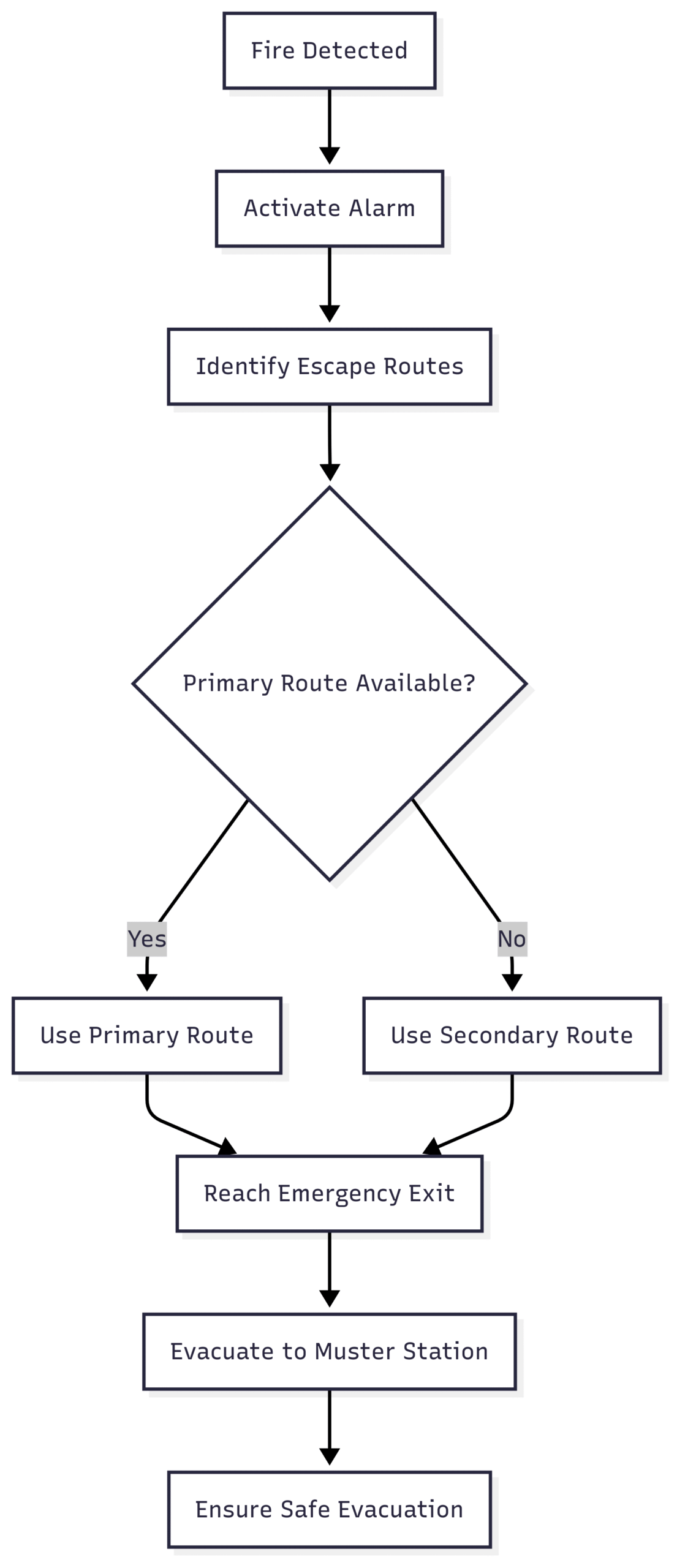
6. Firefighters’ Outfits
Chapter 3 of the FSS Code mandates firefighters’ outfits to enable crew to combat fires safely. These include:
- Protective Clothing: Heat-resistant suits, gloves, boots, and helmets protect against flames and hazardous materials.
- Breathing Apparatus: Self-contained breathing apparatus (SCBA) provides breathable air in smoke-filled environments, with specified capacity and performance standards.
- Additional Equipment: Tools like fire axes, portable radios, and thermal imaging cameras enhance firefighting and rescue operations.
- Storage and Maintenance: Outfits must be stored in accessible locations and regularly inspected to ensure readiness.
7. International Shore Connection
Chapter 2 details the International Shore Connection (ISC), a standardized fitting that allows ships to connect to shore-based fire-fighting systems for water supply or firefighting support while docked. The FSS Code specifies:
- Dimensions and Materials: The ISC must meet universal standards for compatibility with shore systems, typically made of corrosion-resistant materials like brass.
- Installation: The connection must be easily accessible and clearly marked on the ship.
- Maintenance: Regular inspections ensure the ISC remains functional and free of obstructions.
8. Other Systems
The FSS Code also covers:
- Sample Extraction Smoke Detection Systems (Chapter 10): These systems draw air samples from protected areas to detect smoke early, used in cargo holds and machinery spaces.
- Low Location Lighting Systems (Chapter 11): These provide illumination in low areas like tank tops and duct keels to aid evacuation.
- Inert Gas Systems (Chapter 15): Mandatory on tankers, these systems reduce oxygen levels in cargo tanks to prevent explosions.
Fire Prevention and Firefighting Principles
The FSS Code emphasizes prevention over firefighting due to limited onboard resources. Key principles include:
- Find the Fire: Identify the fire’s size, location, and type using detection systems.
- Inform the Bridge: Sound alarms immediately, even for small fires, to alert the crew.
- Restrict the Fire: Close doors, isolate fuel and electrical supplies, and shut ventilation to contain the fire.
- Extinguish the Fire: Use appropriate firefighting media (e.g., water, foam, CO2) based on the fire type.
These principles rely on well-maintained equipment and a trained crew, both of which are standardized by the FSS Code.
Recent Updates and Technological Advancements
The FSS Code is regularly updated to incorporate new technologies and lessons from incidents. Recent amendments include:
- Advanced Fire Detection: Integration of infrared and video smoke detection systems to improve early detection and reduce false alarms.
- Enhanced Extinguishing Systems: Updated standards for water mist and foam systems, improving effectiveness and reliability.
- Strengthened Training: Enhanced crew training requirements to ensure proficiency in using fire safety equipment and emergency procedures.
These updates reflect the IMO’s commitment to improving maritime safety through technological innovation and lessons learned from past incidents.
Importance of Crew Training
The human factor is critical in fire safety. The FSS Code mandates regular crew training and drills to ensure familiarity with:
- Operating fire detection and extinguishing systems.
- Using firefighters’ outfits and breathing apparatus.
- Executing evacuation procedures.
- Coordinating with shore-based fire services via the ISC.
Training enhances crew preparedness, reducing response times and improving outcomes during fire emergencies.
Specifications and Costs
While the FSS Code does not specify costs, implementing its requirements involves significant investment in equipment, installation, and maintenance. Below is an overview of typical specifications and estimated costs for key systems (based on industry standards, not specific to any supplier):
| System/Component | Specifications | Estimated Cost (USD) |
|---|---|---|
| Fire Pump | 0.27 N/mm² pressure, 100-300 m³/h capacity | $10,000-$50,000 |
| CO2 System | 30-50 kg CO2 per m³ of protected space | $20,000-$100,000 |
| Foam System | 6-12 liters/min/m² application rate | $15,000-$80,000 |
| Water Mist System | 0.1-0.3 mm droplet size, 5-10 liters/min | $25,000-$120,000 |
| Fire Detection System | Smoke, heat, flame detectors, zoned configuration | $10,000-$60,000 |
| Firefighters’ Outfit | Heat-resistant suit, SCBA, 30-min air supply | $2,000-$5,000 per set |
| International Shore Connection | Brass, 2.5-inch diameter, universal flange | $500-$2,000 |
Note: Costs vary based on ship size, system complexity, and supplier. For precise pricing, contact marine equipment suppliers or consult shipyard specifications.
Conclusion
The Fire Safety Systems (FSS) Code is a cornerstone of maritime safety, providing a comprehensive framework for preventing and managing fire hazards on ships. By setting rigorous standards for fire detection, extinguishing, escape, and crew preparedness, the code ensures vessels are equipped to handle fire emergencies effectively. Its 15 chapters cover every aspect of fire safety, from technical specifications to operational protocols, making it an essential guide for ship operators, crew, and maritime students.
Understanding and implementing the FSS Code is critical for maintaining safe maritime operations. Regular maintenance, crew training, and adherence to the code’s requirements significantly reduce the risk of catastrophic fire incidents. As technology evolves, the FSS Code continues to adapt, incorporating advancements to enhance safety at sea. For those in the maritime industry, mastering the FSS Code is not just a regulatory requirement but a commitment to safeguarding lives, property, and the marine environment.
Happy Boating!
Share What is Fire Safety System (FSS) Code on Ships? with your friends and leave a comment below with your thoughts.
Read Exploring Asia’s Dominance in the Shipping Industry until we meet in the next article.
